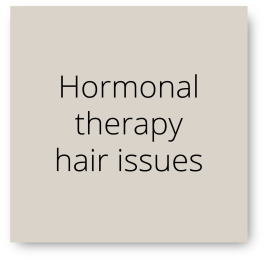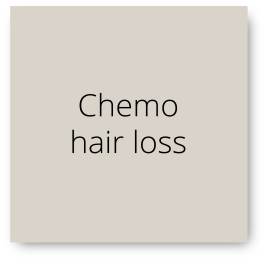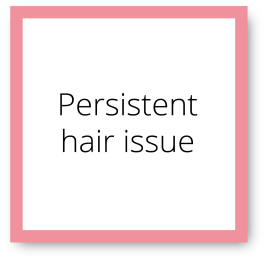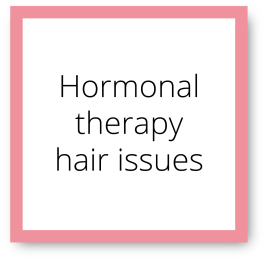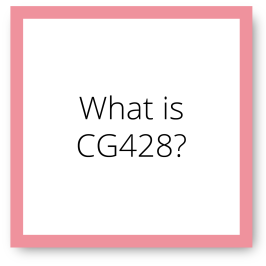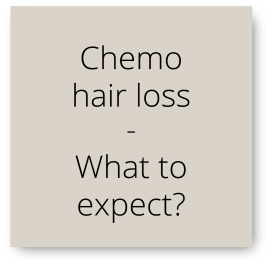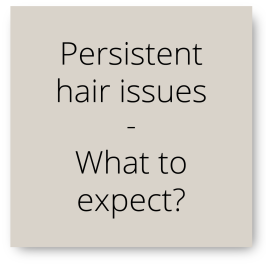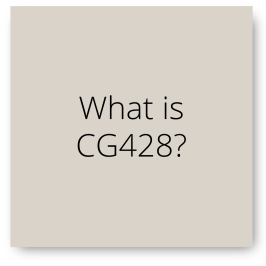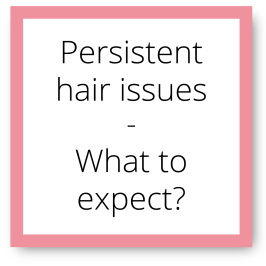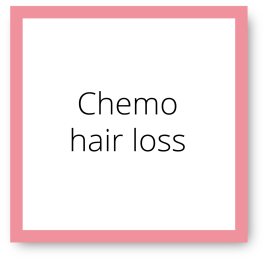
Hair and cancer
Chemotherapy hair loss
As a drawback, chemotherapy also attacks other rapidly growing cells, such as hair follicle cells, hence causing hair loss.
Hair loss intensity depends on the chemotherapy regimen administered. The following chemotherapy treatments are known for causing varying degrees of hair loss (1).
Agents that usually cause hair loss |
Agents that sometimes cause hair loss |
Agents that rarely cause hair loss |
||
 |
 |
 |
||
Adriamycin |
Amsacrine |
Carboplatin |
||
 |
 |
 |
||
Cyclophosphamide |
Bleomycin |
Capecitabine |
||
 |
 |
 |
||
Daunorubicin |
Busulphan |
Carmustine |
||
 |
 |
 |
||
Docetaxel |
Cytarabine |
Cisplatin |
||
 |
 |
 |
||
Epirubicin |
5-Fluorouracil |
Fludarabine |
||
 |
 |
 |
||
Etoposide |
Gemcitabine |
Methotrexate |
||
 |
 |
 |
||
Ifosphamide |
Lomustine |
Mitomycin C |
||
 |
 |
 |
||
Irinotecan |
Melphalan |
Mitroxantrone |
||
 |
 |
 |
||
Paclitaxel |
Thiotepa |
Procarbazine |
||
 |
 |
 |
||
Topotecan |
Vinblastine |
Raltritrexate |
||
 |
 |
 |
||
Vindesine |
Vincristine |
6-Marcaptopurine |
||
 |
 |
 |
||
Vinorelbine |
Streptozotocin |
Hair loss will continue throughout the chemotherapy treatment until baldness, eventually.
The baldness period (between the moment maximum baldness is reached and first hair regrowth) is 20 weeks on average (4).
Duration from start of chemotherapy treatment until maximum hair recovery is on average 6 months (187 days) (4).
New hair texture and color may temporally be different from the hair you lost (1,2).
The pictures below represent the visual progression of hair pattern and macro pictures of the scalp, through and after chemotherapy (3).
Left to right, weeks 0, 3, 6, 18 and 28.

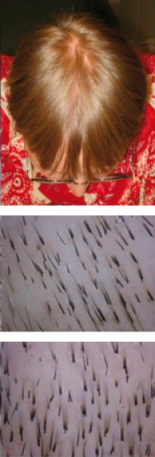
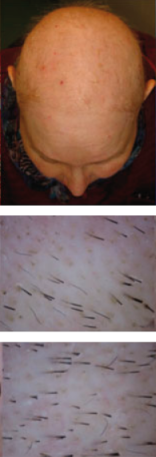


tamoxifen in patients with breast cancer: a cohort study - British Journal of Dermatology (2014) 170, pp643–650
Persistent hair issues resulting from chemotherapy




Hormonal therapy hair issues
(2) Mayo Clinic. Chemotherapy and hair loss: what to expect during treatment. Available at: www.mayoclinic.org/tests-procedures/chemotherapy/in-depth/hair-loss/art-20046920. Last accessed: September 30, 2014.
(3) Analysis of quantitative changes in hair growth during treatment with chemotherapy or tamoxifen in patients with breast cancer: a cohort study - V. Kanti, R. Nuwayhid, J. Lindner, K. Hillmann, A. Stroux, N. Bangemann, A. Kleine-Tebbe, U. Blume-Peytavi and N. Garcia Bartels - British Journal of Dermatology (2014) 170, pp643–650
(4) A randomized trial of minoxidil in chemotherapy-induced alopecia - Duvic, M et al- Journal of the American Academy of Dermatology - Vol.35, No.1, (July 1996), pp. 74-78
(5) Pathobiology of chemotherapy-induced hair loss - Vladimir A Botchkarev et al. - The Lancet Oncology, Vol 14, Issue 2, February 2013
(6) Indications that topical L-carnitin-L-tartrate promotes human hair growth in vivo - Kerstin Foitzik, Edo Hoting, Ulrike Heinrich, Hagen Tronnier, Ralf Paus - Journal of Dermatological Science (2007) 48, 141-144
(7) Alopecia With Endocrine Therapies in Patients With Cancer - V Saggar, S Wu, M Dickler, M Lacouture - The Oncologist 2013; 18:1126–1134
(8) Breast Cancer.org: Why and How Hair Loss Happens. Available at: www.breastcancer.org/tips/hair_skin_nails/hair_loss. Last accessed: September 30, 2014
(9) Breast cancer action group (2008) Side-effects revisited: women’s experiences with aromatase inhibitors. Zivian M, Salgado B - Available at: www.bcaction.org. (accessed october 3, 2014)
(10) www.cancer.org/cancer/breastcancer/detailedguide/breast-cancer-treating-hormone-therapy
Meet CG428
CG428 is a botanical lotion intended to help hair recovery after chemotherapy hair loss.
How CG428 works?
CG428 helps restoring the optimal environment required for healthy hair growth.
Apart from rare cases of permanent alopecia as a result of chemotherapy, hair should naturally grow back after chemotherapy hair loss. CG428 lotion gives hair a helping hand during this process through restoring a healthy natural hair cycle.
Is CG428 safe?
In studies, CG428 was found to be safe and well tolerated.
CG428 contains non-denatured alcohol.
CG428 contains 4 botanical ingredients.
Not to be used by subjects already receiving a treatment on the scalp and head area (eg: head and neck radiotherapy, brain radiotherapy).
Do not apply on altered skin such as open wounds, pustules and skin cancer.
Avoid the use of CG428 in case of any hypersensitivity to one of the components.
For external use only. Avoid contact with eyes. Keep out of reach of children. Do not swallow.
How to use CG428?
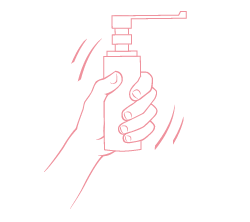
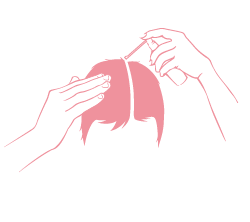
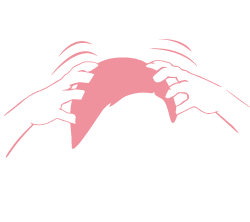
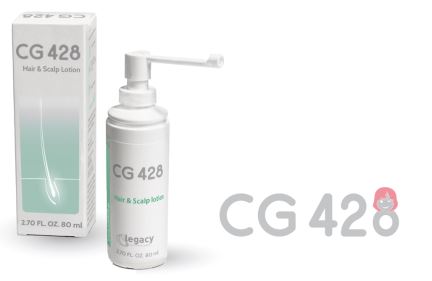
Hair recovery after chemotherapy hair loss
The CARA study suggests that the period of baldness was reduced by 5 - 16 weeks in subjects using the product (2).
In most volunteers, hair was visible over the whole scalp before week 10 after end of chemotherapy.
Reference data (1) mention that only a first hair regrowth is usually observed by week 10.
The pictures aside show that volunteers who have started product application soon after chemotherapy initiation never reached total baldness.
The pictures below show how CG428 benefited cancer patients under chemotherapy in comparaison to the typical course of hair loss.
Reference |
Chemo treatment |
Start of product use |
Before start of chemo (or else) |
During chemo |
Week 0 = End of chemo |
Week 2 |
Week 3 |
Week 5 |
Week 6 |
Week 8 |
Week 10 |
Week 12 |
Week 14 |
Week 16 |
||||||||||||||
V. Kanti et al. (3) |
Cyclophosphamide
Taxane |
 |
End of
chemo
(week 16
after start
of chemo) |
 |
 |
|||||||||||||||||||||||
Duvic et al. (1) |
Maximum hair loss is reached usually 6 weeks after start of chemo |

|
First hair regrowth |
|||||||||||||||||||||||||
CG428 user |
Chemo treatment |
Start of product use |
Before start of chemo (or else) |
During chemo |
Week 0 = End of chemo |
Week 2 |
Week 3 |
Week 5 |
Week 6 |
Week 8 |
Week 10 |
Week 12 |
Week 14 |
Week 16 |
||||||||||||||
CARA 03 |
Gemcitabine Docetaxel |
-14 weeks before start of chemo |
 |
 |
 |
 |
 |
 |
||||||||||||||||||||
CARA 04 |
Docetaxel Pertuzumab Trastuzumab T-DM1 |
At start of chemo |
 |
End of chemo |
 |
 |
 |
|||||||||||||||||||||
CARA 02 |
Fluorouracil Epirubicine Cyclophosphamide Paclitaxel |
At start of chemo |
 |
 |
End of chemo (estimated) |
 |
 |
 |
||||||||||||||||||||
CARA 01 |
Cyclophosphamide Doxorubicin (Adriamycin) Vincristine |
1 week after start of chemo |
 |
 |
End of chemo |
 |
 |
 |
 |
|||||||||||||||||||
CARA 05 |
Cyclophosphamide Docetacel |
Week 2 |
 |
 |
End of chemo |
 |
 |
 |
 |
|||||||||||||||||||
CARA 10 |
Fluorouracil Epirubicine Cyclophosphamide Paclitaxel |
2 weeks before end of chemo |
 |
End of chemo |
 |
 |
The above pictures represent individual cases. Results may vary between individuals.
(1) A randomized trial of minoxidil in chemotherapy-induced alopecia - Duvic, M et al- Journal of the American Academy of Dermatology - Vol.35, No.1, (July 1996), pp. 74-78
(2) CARA - Assessment of the efficacy of CG428 in the recovery from chemotherapy induced alopecia in women (an open label evaluation), Japan 2013
(3) Analysis of quantitative changes in hair growth during treatment with chemotherapy or tamoxifen in patients with breast cancer: a cohort study - V. Kanti, R. Nuwayhid, J. Lindner, K. Hillmann, A. Stroux, N. Bangemann, A. Kleine-Tebbe, U. Blume-Peytavi and N. Garcia Bartels - British Journal of Dermatology (2014) 170, pp643–650
Persistent hair issues resulting from chemotherapy
After 3 months of CG428 application, improvement was observed and reported* by 76,2% of volunteers (2).
First improvements were observed and reported as early as 1 month in 33,3 % of the volunteers.
14,3 % of volunteers have not yet observed any improvement after 4 months of application.
Years since end of chemotherapy |
Hair issues reported by volunteers |
Start of CG428 |
Month 1 |
Month 2 |
Month 3 |
First improvement reported after |
||||||
2.4 years |
Hair never normalized: Lower volume and thinner hair compared to before chemotherapy. |
 |
 |
 |
 |
1 month of CG428 application |
||||||
4.6 years |
Hair did not normalize 4 years after chemotherapy. I have tried several products without results. |
 |
 |
 |
 |
1 month of CG428 application |
||||||
12.5 years |
More than 12 years after end of chemotherapy, frontal area never fully recovered. |
 |
 |
 |
 |
1 month of CG428 application |
||||||
1.5 year |
19 months after end of chemotherapy the back area didn’t recover properly. |
 |
 |
3 months of CG428 application |
(1) Breast Cancer Society of Japan Annual Meeting, 2013 - Dr Ito, Sogo Hitachi Hospital
(2) RELAC - Assessment of the efficacy of CG428 in the recovery from chemotherapy long term side effects on hair in women (an open label evaluation), Japan 2013
Where do you stand?

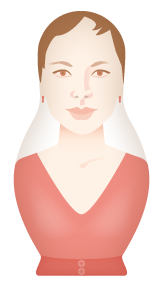
Apart from rare cases of permanent alopecia as a result of chemotherapy, hair should naturally grow back after chemotherapy hair loss. CG428 lotion gives hair a helping hand during this process through restoring a healthy natural hair cycle. This document contains information related to chemotherapy induced alopecia. Such information is provided for educational purposes only, does not constitute medical advice, and is not meant to be a substitute for the advice of your oncologist or other healthcare professional.
The testimonials below were translated from Japanese to English.
 |
Diagnosed with malignant lymphoma Chemotherapy treatment: Cyclophosphamide, Adriamycin, Vincristine Started CG428 one week after beginning of chemotherapy treatment. _____________________________________________________________________________ |
 As expected I lost a lot of hair during my chemotherapy, but the remaining hair I had was still
growing during the treatment, which made me confident.
2 months after the end of chemotherapy, I was already observing many new growing hair. I was
glad to see hairs regrow at sides too.
At 3 months my parents were really suprised to see my improvement since the previous month ; it
was really encouraging to see their reaction. After shampooing my top scalp hair were upright and
looked healthy. I really felt confident to go out without a wig or cap after 6 months. At that time I
had the equivalent of a very short hair style and I felt relieved.
As expected I lost a lot of hair during my chemotherapy, but the remaining hair I had was still
growing during the treatment, which made me confident.
2 months after the end of chemotherapy, I was already observing many new growing hair. I was
glad to see hairs regrow at sides too.
At 3 months my parents were really suprised to see my improvement since the previous month ; it
was really encouraging to see their reaction. After shampooing my top scalp hair were upright and
looked healthy. I really felt confident to go out without a wig or cap after 6 months. At that time I
had the equivalent of a very short hair style and I felt relieved.

Chemotherapy

after chemotherapy

after chemotherapy

after chemotherapy
 |
Diagnosed with uterine sarcoma Chemotherapy treatment: Gemcitabine, Docetaxel Started CG428 before the beginning of chemotherapy treatment. _____________________________________________________________________________ |
 I have started the product before my chemotherapy. I lost most of my hair during the treatment
but at my 9th chemotherapy session, I noticed some hair starting to growth. During the 4 next chemotherapy
sessions, my hair kept growing. At that time, when I looked at the mirror every morning,
I felt my hair was growing each day. The hair at the hairline and the sides seemed to be
growing the most. This may be because I apply the lotion from this area.
3 months after my last chemotherapy session I had enough hair to stop using my partial wig and I
was able to return to work.
I have started the product before my chemotherapy. I lost most of my hair during the treatment
but at my 9th chemotherapy session, I noticed some hair starting to growth. During the 4 next chemotherapy
sessions, my hair kept growing. At that time, when I looked at the mirror every morning,
I felt my hair was growing each day. The hair at the hairline and the sides seemed to be
growing the most. This may be because I apply the lotion from this area.
3 months after my last chemotherapy session I had enough hair to stop using my partial wig and I
was able to return to work.

rapy session

rapy (13th session)

after chemotherapy
 |
Never fully recovered her hair after chemotherapy treatment against breast cancer. 4.5 years after her last chemotherapy session, she started CG428. _____________________________________________________________________________ |
 Even 4 years after cancer, my hair never really came back, especially on the frontal area.
I have tried several products that weren’t really efficient and I usually gave up after 1 year.
But this time I feel the product is working. After 1 month I could already see a little hair growth.
I have been using the product for 2 months already. I look forward to keep improving.
Even 4 years after cancer, my hair never really came back, especially on the frontal area.
I have tried several products that weren’t really efficient and I usually gave up after 1 year.
But this time I feel the product is working. After 1 month I could already see a little hair growth.
I have been using the product for 2 months already. I look forward to keep improving.

4 years after last
chemotherapy

CG428 start

CG428 start
 |
Never fully recovered her hair after chemotherapy treatment against breast cancer. 12.6 years after her last chemotherapy session, she started CG428. _____________________________________________________________________________ |
 More than 12 years after my cancer treatment, my hair didn’t regrow on the frontal area.
More than 12 years after my cancer treatment, my hair didn’t regrow on the frontal area.After 1 month of use, I feel the improvement since less hair is falling. At 2 months, there is still not much volume, but the hair itself is thicker and stronger and I see new hair on the frontal area. I would like to keep on using the product.


12 years after last
chemotherapy

CG428 start

CG428 start
Share
Please share your story.

Questions & Answers
Agents that usually cause hair loss |
Agents that sometimes cause hair loss |
Agents that rarely cause hair loss |
||
 |
 |
 |
||
Adriamycin |
Amsacrine |
Carboplatin |
||
 |
 |
 |
||
Cyclophosphamide |
Bleomycin |
Capecitabine |
||
 |
 |
 |
||
Daunorubicin |
Busulphan |
Carmustine |
||
 |
 |
 |
||
Docetaxel |
Cytarabine |
Cisplatin |
||
 |
 |
 |
||
Epirubicin |
5-Fluorouracil |
Fludarabine |
||
 |
 |
 |
||
Etoposide |
Gemcitabine |
Methotrexate |
||
 |
 |
 |
||
Ifosphamide |
Lomustine |
Mitomycin C |
||
 |
 |
 |
||
Irinotecan |
Melphalan |
Mitroxantrone |
||
 |
 |
 |
||
Paclitaxel |
Thiotepa |
Procarbazine |
||
 |
 |
 |
||
Topotecan |
Vinblastine |
Raltritrexate |
||
 |
 |
 |
||
Vindesine |
Vincristine |
6-Marcaptopurine |
||
 |
 |
 |
||
Vinorelbine |
Streptozotocin |
More information is available on www.mayoclinic.org
More information is available on www.cancer.net
(2) Alopecia With Endocrine Therapies in Patients With Cancer - V Saggar, S Wu, M Dickler, M Lacouture - The Oncologist 2013; 18:1126–1134
(3) Pathobiology of chemotherapy-induced hair loss - Vladimir A Botchkarev et al - The Lancet Oncology, Vol 14, Issue 2, February 2013
About you and us
As leaders in Botanical Drug development, our goal is to develop transformative medicines for the treatment of autoimmune and inflammatory diseases, with an immune-sparing mode of action, allowing safe chronic use..
Our research work was published and presented at major scientific congresses worldwide and we were granted several patents globally.
 |
 |
|
SABCS - San Antonio Breast Cancer Symposium - 2014 - USA |
Singapore International Conference on Skin Research - 2014 - Singapore |
|
 |
 |
|
Critical Mass - Young Adult Cancer Alliance - 2014 - USA |
AAD - American Academy of Dermatology - 2014 - USA |
|
 |
 |
|
SIO - Society of Integrative Oncology - 2014 - USA |
EADV - European Academy of Dermatology & Venereology - 2014 - Serbia |
|
 |
 |
|
SIS - World Congress on Breast Cancer - 2014 - USA |
WCHR - World Congress for Hair Research - 2014 - Korea |
|
 |
 |
|
AACR - American Association for Cancer Research - 2014 - USA |
EADV - European Academy of Dermatology & Venereology - 2013 - Turkey |
|
 |
 |
|
MASCC - Multinational Association for Supportive Care in Cancer - 2014- USA |
WCHR - World Congress for Hair Research - 2013 - Scotland |
|
 |
 |
|
AACR - American Association for Cancer Research - 2013 - USA |
ISHRS - International Society for Hair Restoration Surgery - 2012 - The Bahamas |
|
 |
 |
|
MASCC - Multinational Association for Supportive Care in Cancer - 2013- USA |
JSCHR - Japan Society of Clinical Hair Restoration - 2012 - Japan |
|
 |
 |
|
MASCC - Multinational Association for Supportive Care in Cancer - 2015 - Denmark |
WCD - World Congress of Dermatology - 2015 - Canada |
|
 |
 |
|
YSC - Young Survival Coalition - 2015 - USA |
||
 |
||
NCBC - National Consortium of Breast Centers - 2015 - USA |
||
 |
||
ONS - Oncology Nursing Society - 2015 - USA |
||
 |
||
* Oral presentation or Poster presentation |
1066 Epalinges (Lausanne)
+41 21 552 21 70
contact@legacyhealthcare.ch
Plainsboro, New Jersey 08536
contact.usa@legacyhealthcare.ch
1-8-3 Shibuya, Shibuya-ku, Tokyo 151-0061
+81 3-6805-0651
contact.jp@legacyhealthcare.ch



